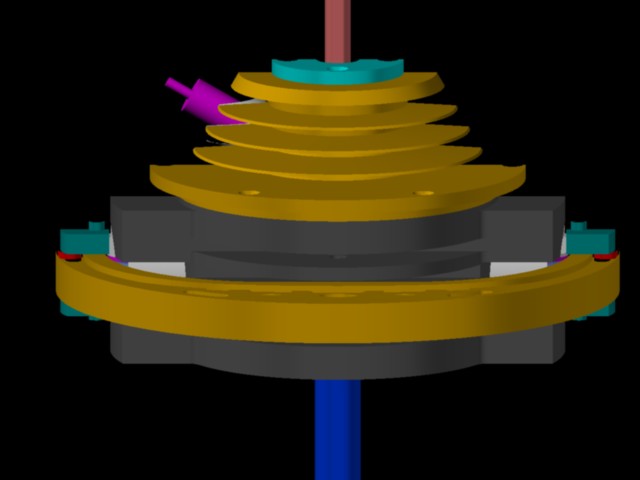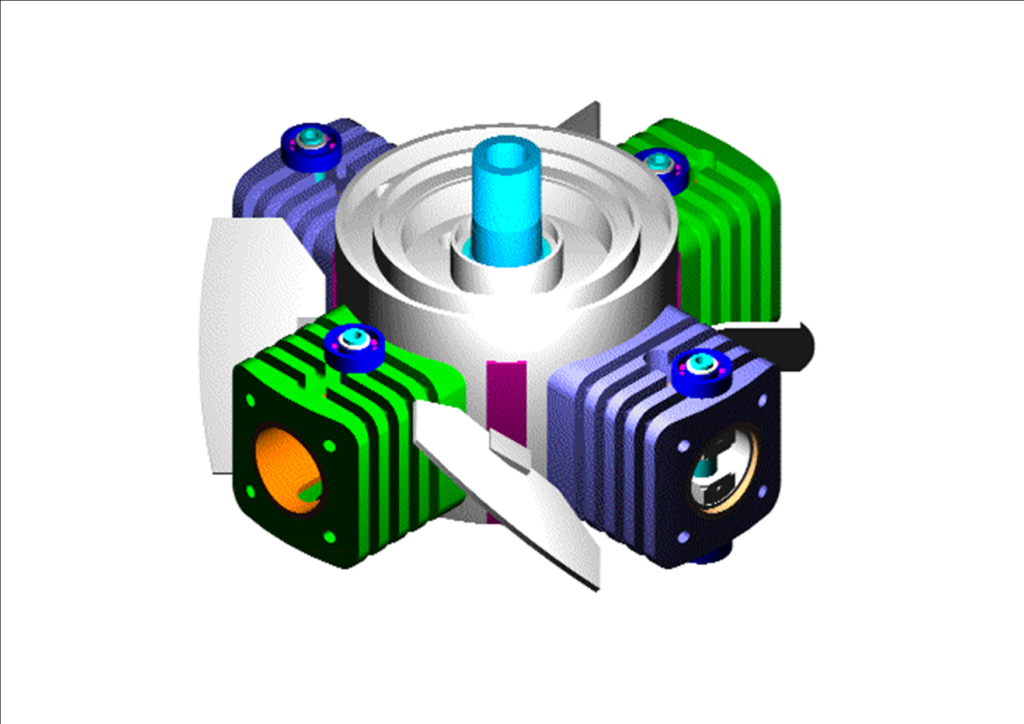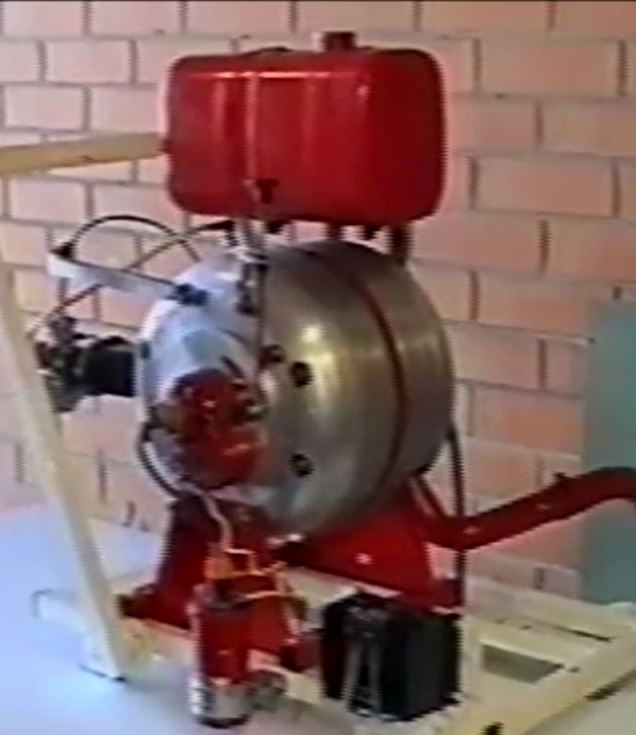Hilton Centrifical Engines
M9 Split Cycle Engine
The Hilton slit cycle engine was designed in early 2000. The prototype was built approximately fifteen years ago and has been operating successfully every since. It is suitable as a Hydrogen engine or for using Synergetic Deuterium fuel. Currently in storage. New Technology–Requires Funding

M7-M8 Hydrogen & Air engines
The M7 was designed late last century resulting in a prototype of the two piston hydrogen engine being built and completed in 2004, Modifications for use of compressed air was also carried out in 2006 and recoded as M8. Funding difficulties at that time resulted in the design being mothballed and no further work was done on the prototype. It is currently held in storage. New Technology–Requires Funding
M6 Bio-diesel engine
The M6 Bio-diesel engine was designed in the 1990’s but before work could be carried out on building a prototype my backer at that time went broke leaving it still on the drawing board. It carries its own compressors similar to the M9 and is designed with a mechanical injector similar to the Perkins diesel. New Technology–Requires Funding

M5/7 Centrifical Two Stroke
The M5 Series was developed in the 1980’s culminating in the M5/7 design. This is an expired patented engine that was demonstrated across Australia in the late 1900’s, It was mothballed into storage due to the development of the M9.
Development of the various engines
In my early teens, I acquired my first motor cycle, an original hand made Arthur James Stephens (AJS) fitted with a cow hide seat and a solid brass petrol tank slung beneath a cross bar. I purchased this machine for the princely sum of five English pounds. As I was too young to obtain a licence, I resolved to riding this unique antique along the banks of the river Themes. As I thundered along the gravel path, huge clouds of smoke bellowed from the glowing red exhaust pipe beneath me as I tried to avoid burning my leg on the hot steel. It dawned on me then, that the millions of internal combustion engines being used all over the world,
would eventually drown the planet in a chemical cocktail of poisonous smog discarded by the burning of fossil fuels. I reasoned that there must be a better way and I have spent most of my life searching for that holy grail that held the promise of clean free energy.
When younger, I naively believed that if something better was invented it would be adopted to replace the previous less efficient system. What I didn’t realize then was that vested interest ruled. Unfortunately, there is a lot of vested interest in the power and automotive industries. My engines are still viable for all stand alone systems.

